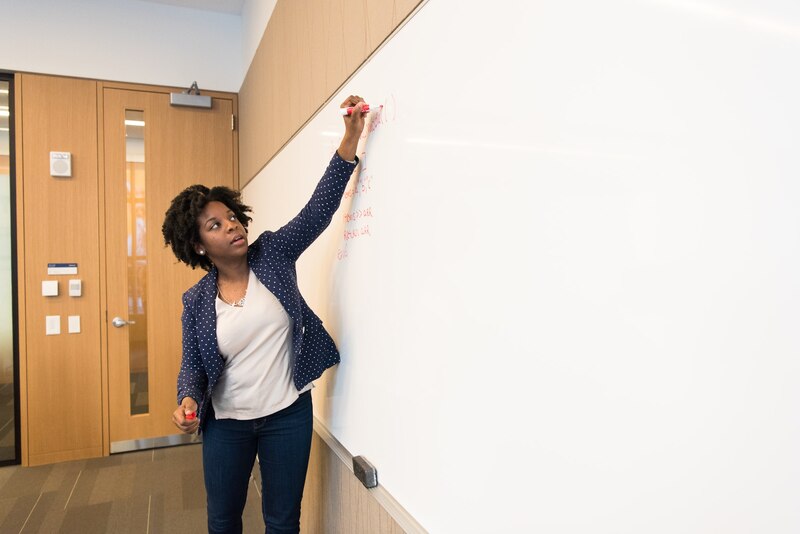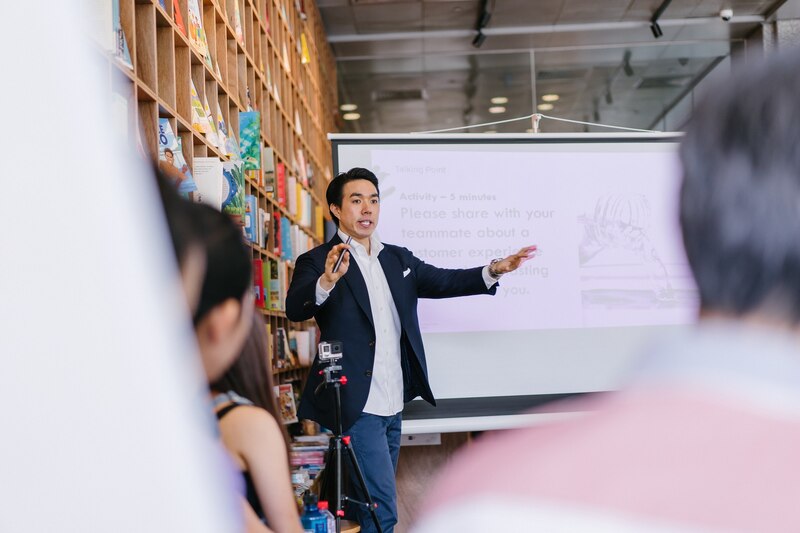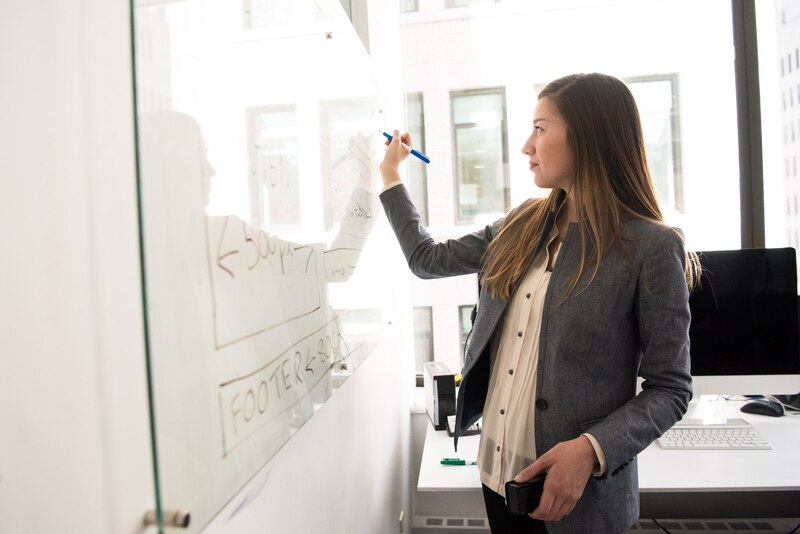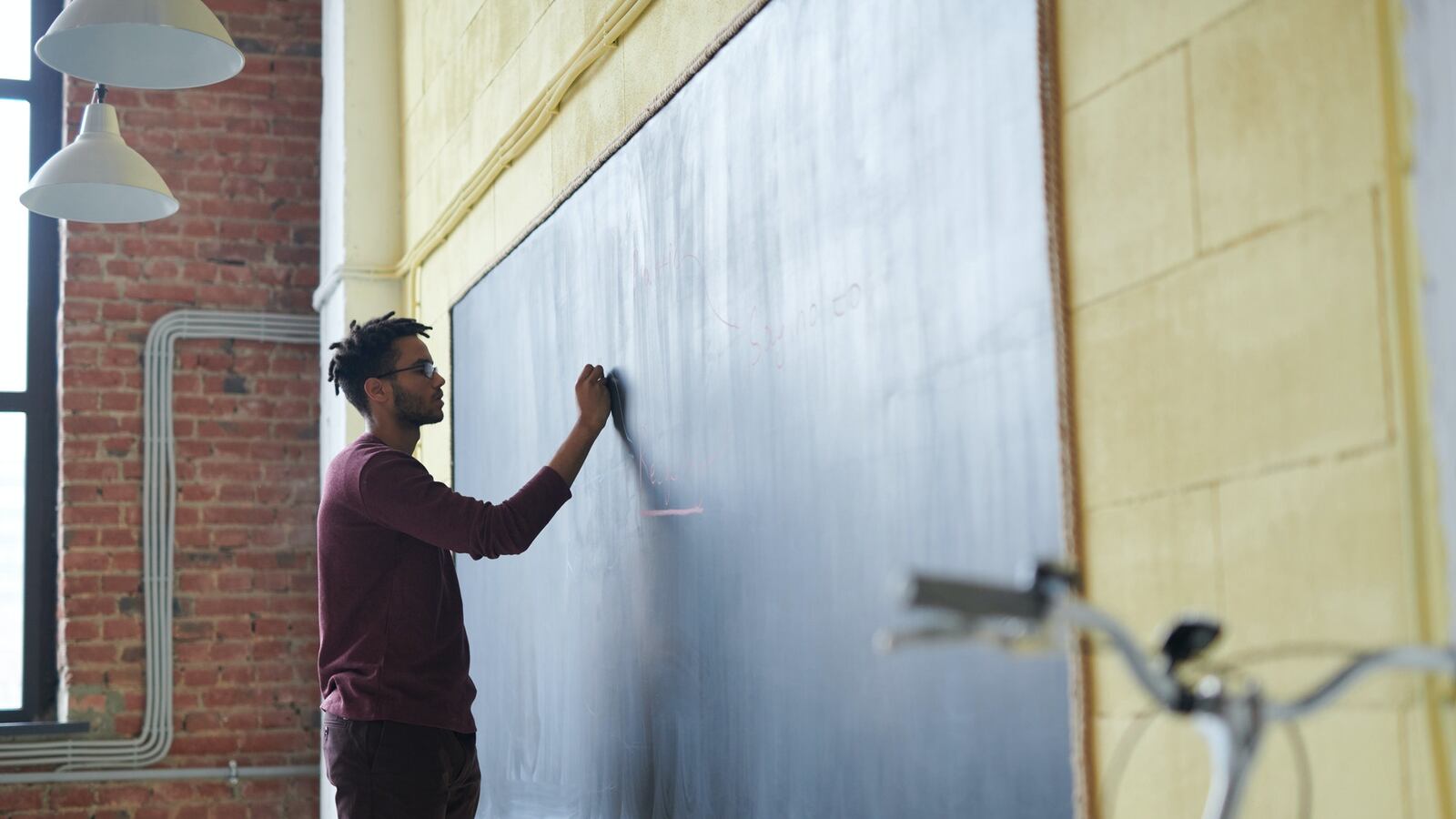Article written by Matt Gonzales.
When Sheryl Crow’s pop hit “My Favorite Mistake” rings through Tina Ahlgren’s middle school classroom, it signals to her students that something worth celebrating has just happened: Someone has made a mistake.
Playing a clip of Crow’s ode to happy accidents is just one of numerous ways the middle school teacher “normalizes mistakes” for her students. Ahlgren, a finalist for Indiana Teacher of the Year in 2015 (and a nominee again this year), spent the first 13 years of her career teaching algebra and calculus in Indianapolis public schools primarily serving families from low-income backgrounds. In 2018, she took a position at Center for Inquiry #2, a K-8 public magnet in downtown Indianapolis.
While her current students are a bit younger, Ahlgren says the need to normalize mistakes still looms large.
“Middle schoolers are absolutely terrified of being embarrassed in front of their peers,” she says. “My goal is to make my classroom a safe space to make mistakes, and learn from them, without thinking of it as an embarrassing thing.”
Ahlgren teaches advanced math, a subject where mistake-making is crucial to success. But her students’ intense fear of not getting things right in front of their peers can sometimes be a roadblock.
“For the first couple of weeks in my class, students are so afraid of being wrong,” she said. “They don’t want to look like they don’t belong there.” So when a student inevitably gets tripped up, Ahlgren goes out of her way to treat it as a sign of progress. And she takes care to do so “in a way that maintains their dignity and respect.”
That means more than offering a few friendly words of encouragement. She says building respectful relationships with students happens in the “minutiae” of everyday interactions, over a long period of time. There are no shortcuts, and it can’t be faked. “Teenagers see right through you when you’re not being real,” she says.

A matter of (mutual) respect
David Yeager, a psychology professor at the University of Texas who specializes in adolescent development, says adolescents have a heightened awareness of social and cultural cues that help them understand the world around them. He calls this hypersensitivity a “superpower,” much in the same way that language-learning is a superpower for infants and toddlers. Like most superpowers, however, it comes with a built-in vulnerability. It’s rooted in the “one-trial learning” that is typical of adolescence.
He explains that when an adolescent takes an action that produces an undesirable outcome, she will tend to avoid taking the same action again. While this helps adolescents protect their social status, it can deter them from taking the risks required to learn difficult material and concepts. The key to solving the problem, Yeager says, is foregrounding two developmental adolescent needs: belonging and agency.
In the context of adolescent development, “belonging” means to feel supported by others. “Agency” means to have autonomy and to feel respected. According to Yeager, respect is especially salient for engaging and motivating adolescent students. “Based on the developmental science, we think that respect is probably the single most important thing to convey to a young person,” he says. “Especially as they’re going through the turmoil of puberty.”
Yeager adds that teachers would be well-served by giving adolescents greater room for autonomy and self-actualization.
“Most of how we’ve structured youth and adolescence in our current society is disrespectful to young people,” Yeager says. “We basically tell them that they don’t matter. Just stay in school until you’re 22, maybe 25, and then do something that’s of consequence.”
While teachers can’t change the broader American culture, they can control what happens in their classroom. “Teachers need to focus on an environment of mutual respect, which means providing support for young people’s autonomy and the choices they make.”

Building a sense of belonging
Ahlgren has made mistakes of her own in her teaching career. For example, she “cringes” when she thinks of her first couple of years teaching at a high school where nearly all of the mostly students of color qualified for a free and reduced lunch. She says she suffered from “a savior complex” and wanted to “fix all their problems and make it all better.”
“Over the years, I realized that’s the wrong way to think about it,” she says. “The fact is, those students have really wonderful things going on in their lives that too often people don’t value. Understanding the strengths and unique value that each student brings to the classroom is the key to creating a safe and effective classroom culture.”
Velma McBride Murry agrees. A professor at Vanderbilt University who has spent the past 25 years researching the effects of racism on the lives of African-American youth, she says positive student-teacher relationships start with a teacher who creates an educational space where students genuinely feel like they belong. Giving students voices, and even allowing them to help make decisions about what happens “as a consequence of any behavior that is not necessarily upheld as optimal behavior in school,” can lead to greater trust and improved relationships between students and teachers.
McBride Murry adds teachers should listen, carefully, to what students have to say.
“They should know a lot about the students. Who they hang out with, who their friends are, what they talk about in terms of future goals. When those things align and converge, students often feel good about their teachers, and this is a way to facilitate school bonding and increase academic orientation among students.”

Embracing cultural humility
When she’s not in the classroom, Alhgren can usually be found roaming the hallways of her school. There, she’s often engaging in conversations with kindergarten, first grade, and second grade students. She’s already on a first-name basis with many of them.
“I make sure they know I see them, even when I may not have them in the classroom for another six years. The sooner they know that I notice them and that they are valuable members of our community in my eyes, the better.”
Ahlgren says she first realized the power of building strong relationships with her students while teaching at Howe High School, a majority Black high school on the eastside of Indianapolis. In contrast to many other teachers at the school, she bought a house in a neighborhood in the school district.
“I think teachers sometimes don’t want to see their kids outside of school because it can start to feel all-consuming,” she says. “But there’s something about them seeing you at the grocery store or seeing you walking down the street that really makes a difference.”
According to McBride Murry, when teachers like Ahlgren embrace and explore the communities of their students, they develop a “cultural humility” that gives them “a greater sensitivity to the lived experiences of the students.” This helps them build those mutually respectful relationships that are so critical to success in adolescent education.
As students return to the classroom next year, McBride Murry says it’s the ideal time for teachers to focus on fostering “caring, connected relationships” to facilitate positive developmental outcomes as well as academic success. “Someone caring about and believing in you matters,” she says. “It can really affect the future developmental trajectory of students and particularly during adolescence.”
Matt Gonzales is an Indianapolis-based writer and co-founder at Matinee Creative.
Chalkbeat’s editorial staff had no role in writing or preparing this paid content. Learn about our sponsored content policy.


